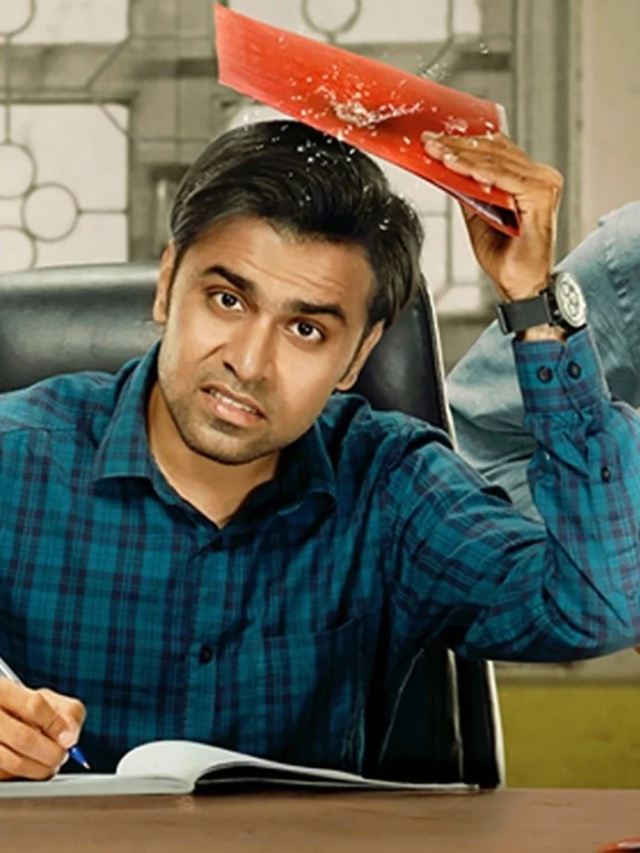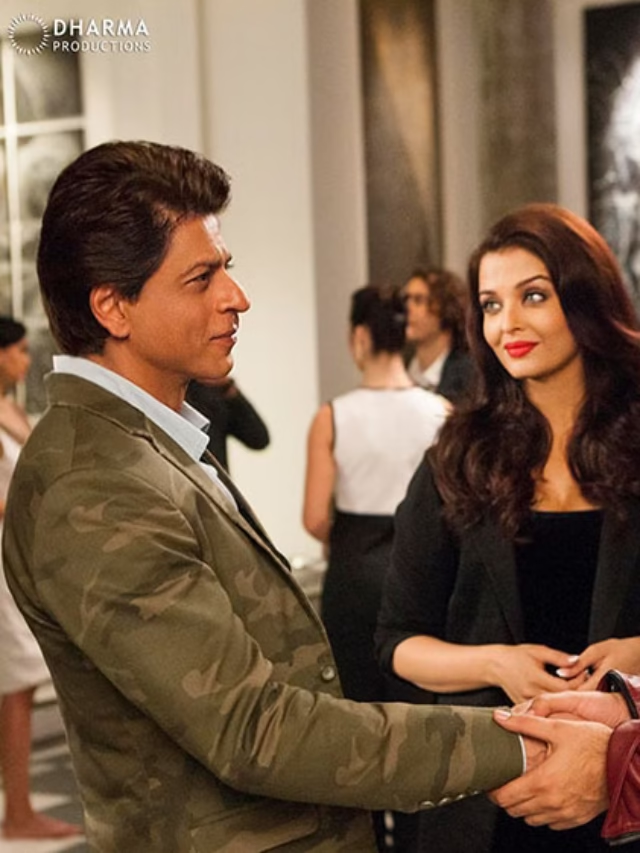
Kajol’s powerhouse comeback to the big screen is always a cause for celebration, and her newest outing, Maa, promised something exciting: a modern mother tapping into age-old power to battle evil forces menacing her daughter. Helmed by Vishal Furia, whose horror credentials are well-known, the film takes an unflinching plunge into patriarchy, curse of generations, and ancient fear of motherhood. Our Kajol’s Maa review goes deep to find out whether this ambitious mix of mythology, horror, and social commentary meets its potential or gets lost in its own darkness.
The Premise: Digging Up a Bloody Heritage
Ambika (Kajol) and her spouse Shuvankar (Indraneil Sengupta) have established a world far away from his sullied family history of rural Bengal. They’ve successfully kept their creative 12-year-old daughter, Shweta (Kherin Sharma), away from the dark secrets of their family. A sad incident, however, compels Ambika and Shweta to return to the looming, time-warped family haveli in Chandrapur (although the film strangely refers to it as Chandarpur, a non-Bengali pronunciation).
Welcomed by the apparently reliable Joydev (Ronit Roy), the village headman who has run the estate, a sense of foreboding descends at once. The dilapidated glory of the mansion speaks in hushed tones of atrocities. A silent old household reteiner (a convincing Dibyendu Bhattacharya) appears weighed down by unutterable secrets. Flashbacks gradually uncover the ghastly reality: decades of female infanticide, a cruel ritual driven by perverse patriarchal ethos, perpetrated beneath a colossal, evil banyan tree. This carnage gave rise to a curse – an evil spirit, Raktbeej, that attacks young village girls on the threshold of womanhood. Ambika’s return causes the pot to simmer, perils the past from being uncovered, and halts the current vanishings.
Visuels and Atmosphere: Where Maa Truly Excels
One area where Maa truly shines is its visual narrative and atmospheric build-up. The production design is impressive, saturated with colours that turn the rotting haveli both vibrant and claustrophobic. The forest around it, with twisted roots eerily suggesting remains buried beneath, is seriously creepy. The village itself appears shrouded in an eternal veil of terror, its people bearing the scars of centuries of torment at the hands of the reclusive “daitya.”
The sequences showing the Kali Puja are most effective. The cacophonous energy, the white-and-red attired traditional dancers, the thudding rhythms – it all makes for a guttural, disquieting, yet culturally valuable experience. Darkened corridors, yellowed walls, and ephemeral ghosts glimpsed in the gloom go a long way in creating the horror atmosphere, particularly during the first half. The VFX, although unoriginal, is effective at conjuring up the demonic presence and the film’s more fantasy aspects.
Kajol's Power and the Film's Strong Intentions
This is where our Kajol’s Maa movie review finds the film’s beating heart. Kajol commands the screen with a fierce, protective energy. She fully embodies Ambika’s transformation from a concerned modern mother to a woman channeling divine fury to protect her child. The film’s core intention – smashing patriarchal structures – is commendable and desperately relevant. It confronts the barbaric practice of female infanticide head-on, framing it as the literal root of demonic evil.
Also, Maa courageously addresses the ever-present menstruation taboo. One candid, no-nonsense discussion between Ambika and Shweta about periods is a highlight, a small but noteworthy move toward normalizing an otherwise natural biological process shrouded in shame and silence. The movie places motherhood not only as loving care, but as a possible destructive element when the child is in danger, rejoicing in the untamed strength of womanhood and casting it as the final antidote to ingrained evil (both spiritual and societal).
Where the Battle Gets Muddled: Narrative Stumbles
While its capable lead performance and altruistic motives, Maa disappoints precipitously in execution, which ultimately creates a frustrating watch. The main failing is in the writing and overall narrative design. The script (by Saiwyn Quadras) fails to keep pace and make sense. The first half comes across as loose, banking heavily on rote jump scares and crawl-by horror that doesn’t always pay off with actual tension.
The second half spirals into actual muddle. The movie can’t quite make up its mind what it is. Is it a straightforward horror film? A mythological allegory? A feminist revenge fantasy? A social drama? It attempts to be all of them at once and manages to get each one fully right. The central conflict – the Raktbeej curse vs. Ambika’s transformation into a Kali avatar embodying righteous female strength – required a much stronger, more compelling narrative thread.
The fusion of mythology and technology (teased in some of the promos but missing its execution) seems added on and not organically part of the story. The rules of the supernatural all start to get murkier, too often careening into inadvertently campy humor despite the filmmakers’ otherwise somber tone. The final showdown between “good women” and “evil men” (both literal and symbolic demons), conceptually strong, is poorly supported by its narrative and visual cohesion to deliver its supposed impact. It seems rushed and visually disorganized.
Performances Outside the Lead
Although Kajol is the anchor without a doubt, the rest of the supporting cast has variable performances. Ronit Roy brings his characteristic gravitas to Joydev, playing a man of secret depths and intentions quite convincingly. Indraneel Sengupta doesn’t get much screen space but is satisfactory. Dibyendu Bhattacharya, though mute, gets a lot of mileage from his expressions and makes his character interesting. The two young actresses, Kherin Sharma as Shweta and Roopkatha Chakraborty as the local girl Dipika, are genuine and act well within the limited boundaries of their roles.
Kajol's Maa Movie Review: The Final Verdict – A Well-Intentioned Misfire
So where are we? Kajol’s review of her Maa movie ends with the conclusion that the movie is an all-time classic example of great potential being wasted in the form of sloppy execution. Its heart lies totally in the correct place. Addressing female infanticide, menstrual taboo, and setting a mother’s rage as divine power against patriarchal wickedness are all potent, timely themes. Kajol gives a performance worth the central idea, hot and riveting.
But the uninspired writing, uneven pace (meandering first half, murky second half), under-explored mythology-technology mix, and a climax that buckles under its own ambition keep Maa from being the effective film it could be. It careens wildly in several directions without ever achieving a steady, believable orbit.
Who Should Watch?
Die-hard Kajol Fans: Her acting is the strongest part of this movie. If you’re in just for her on-screen presence and intensity, you may find something to enjoy. Viewers Looking for a Social Message in Horror: If you’re interested in Indian horror trying to do more subtext, in spite of the shortcomings, the underlying concepts may appeal to you. Fans of Visually Stylized Environments: The production values and mood are actually quite well-done.
Who May Not Want to Watch?
Viewers Looking for Tight, Logical Horror: The plot shortcomings considerably weaken the frights and suspense. Those Looking for a Subtle or Sensitive Interpretation: The film’s message, although vital, can be overbearing in the context of the confused plot. Audiences Prone to Getting Frustrated by Jumbled Plots: The second half’s uncertainty is a significant drawback.
Final Thoughts
Maa is a good-hearted movie with an excellent lead performance addressing sensitive issues. Kajol fully captures the ferocity of a mother fighting prehistoric patriarchy in the form of supernatural horror. But its ambition is greater than what it can execute. The storytelling falters, especially with the messy second half, that keeps it from reaching its full potential. It’s worth watching as a battle for Kajol and for its central message, but be ready for a ride that’s more jarring and perplexing than outrightly terrifying or redemptive. It’s less of a victory cry and more of an impassioned, albeit finally thwarted, wail against the darkness.














